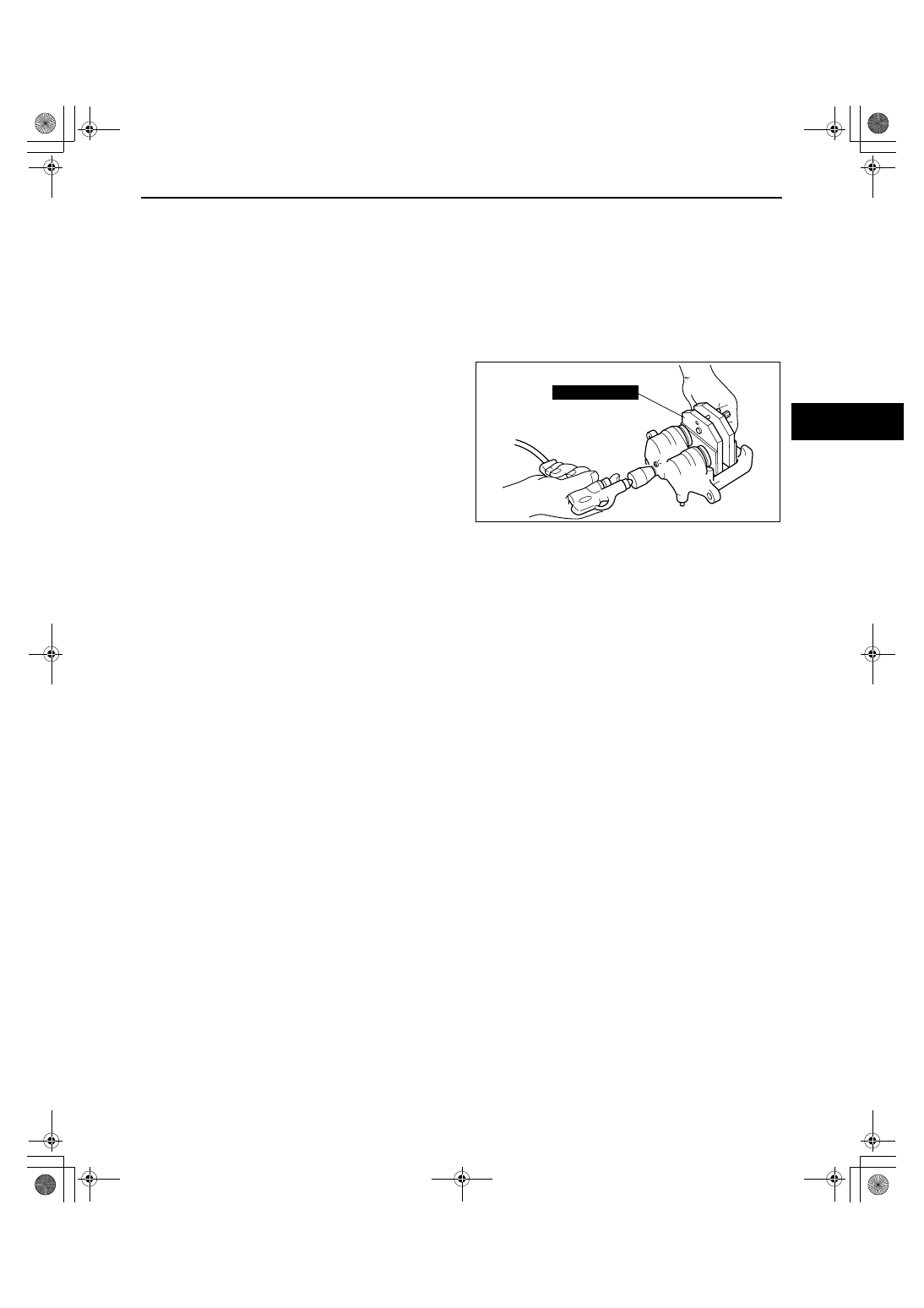Mazda CX 7. Manual - part 212

CONVENTIONAL BRAKE SYSTEM
04-11–19
04-11
Piston Disassembly Note
Warning
• When compressed air is blown into the caliper body, injury to a finger or other part from pinching
could result from the piston springing up. When blowing in compressed air, do not place your
fingers between the piston and caliper body when performing the work.
Caution
• The piston could be damaged if blown out with great force. Blow the compressed air slowly to
prevent the piston from suddenly popping out.
1. Place the SST in the caliper, then blow
compressed air through the hole to force the
piston out of the caliper.
End Of Sie
WM: REAR BRAKE (DISC)
REAR BRAKE (DISC) INSPECTION
id041100800400
Brake Judder Repair Hint
Description
Brake judder concern has the following three characteristics:
Steering wheel vibration
Steering wheel vibrates in the direction of its rotation. This characteristic is most noticeable when applying brakes
at a vehicle speed of 100— 140 km/h {62— 87 mph}.
Floor vibration
When applying brakes, the vehicle body shakes back and forth. The seriousness of shake is not influenced by
vehicle speed.
Brake pedal vibration
When applying brakes, a pulsating force tries to push the brake pad back. The pulsation is transmitted to the brake
pedal.
The following are the main possible causes of brake judder:
Due to an excessive runout (side-to-side wobble) of disc plate, the thickness of disc plate is uneven.
If the runout is more than 0.05 mm {0.002 in} at the position 10 mm {0.39 in} from the disc plate edge, uneven
wear occurs on the disc plate because of uneven pad/plate contact.
If the runout is less than 0.05 mm {0.002 in}, uneven wear does not occur.
The disc plate is deformed by heat.
Repeated panic braking may raise the temperature in some portions of disc plate by approx. 1,000
°C {1,832 °F}.
This results in deformed disc plate.
Due to corrosion, the thickness and friction coefficient of disc plate change.
If a vehicle is parked under damp conditions for a long time, corrosion occurs on the friction surface of disc plate.
The thickness of corrosion is uneven and sometimes appears like a wave pattern, which changes the friction
coefficient and causes a reaction force.
49 T033 001A
acxuuw00001887
1871-1U-06B(04-11).fm 19 ページ 2006年3月15日 水曜日 午前11時13分